| Almost as soon as
series-wired lighting was first sold to the public, one serious
disadvantage became readily apparent: if one of the lamps in a string
failed, the entire string went dark. Parallel
wired strings that did not have this problem were available from the earliest days, but their cost was
prohibitive and the 110 volt lamps used in the sets made before the
mid-1930s burned at a dangerously
high temperature. So, despite its disadvantages, the series string was
hugely popular until just after World War II. Presented on
this page are some of the creative attempts to overcome the series string
shortcomings... |
|
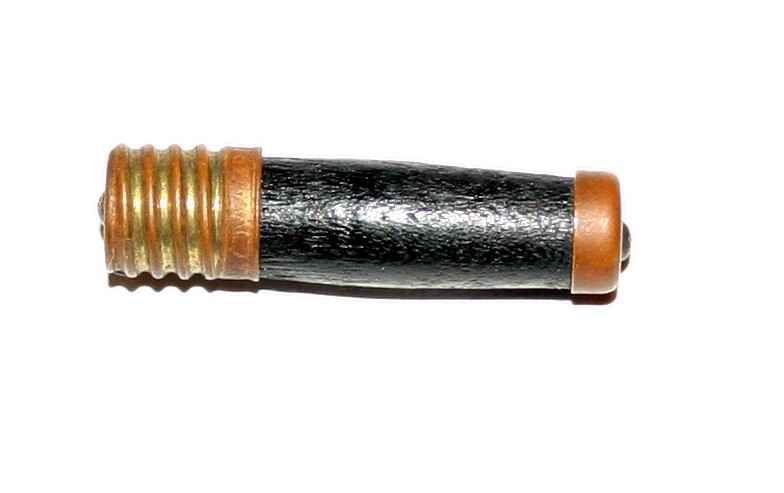
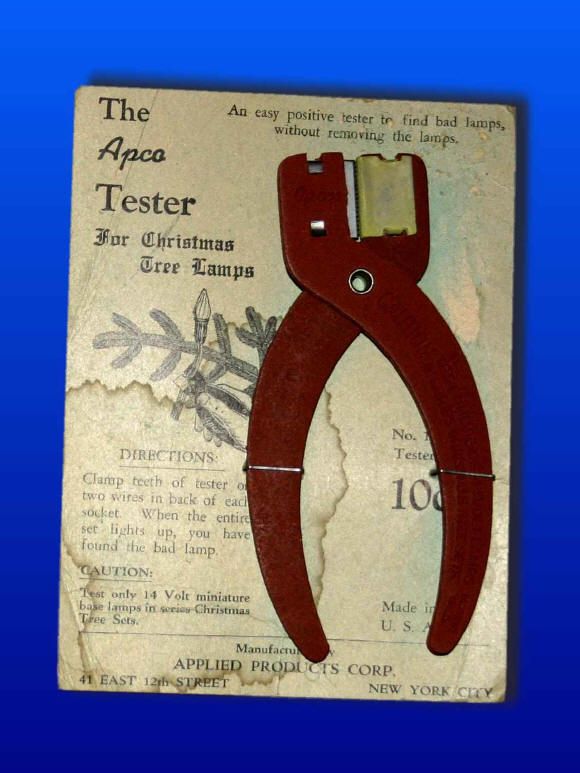
1920
Two interesting testing
devices are pictured above. On the left is a very inexpensive dual
purpose "socket shorter." When the smooth end is inserted directly
into a series wired miniature base socket, the tester effectively
bypasses the socket by shorting it out. Using the device would be
quite tedious, as the operator would have to remove each lamp in a
string of eight lamps one by one and insert the tester to find the
bad lamp. This operation would be little different from the
suggestion of most outfit manufactures: take a known good lamp and
exchange it in each socket on a festoon one by one until the set
lights. However, the tester was advertised for an additional use: as
a temporary "bad bulb replacement." By using the threaded end of the
unit in this way, it would be left in place as a "substitute lamp"
until a proper replacement could be had. The disadvantage of this,
however, is that each lamp remaining in the string would receive a
higher voltage, thusly shortening their operating life.
A slightly more practical
tester is shown on the right. A pliers-type device, it was used by
pinching the pair of wires under each series-wired socket. The fine
teeth on the blade would penetrate the insulation on the
wires, again electrically shorting or bypassing the socket. While
much faster to use than the bulb-substitution method or the other
tester, the fine teeth on this unit would easily cause premature
insulation fraying where the wires were gripped. Obviously, neither
tester was a truly practical solution to the series-wired problem. |
|
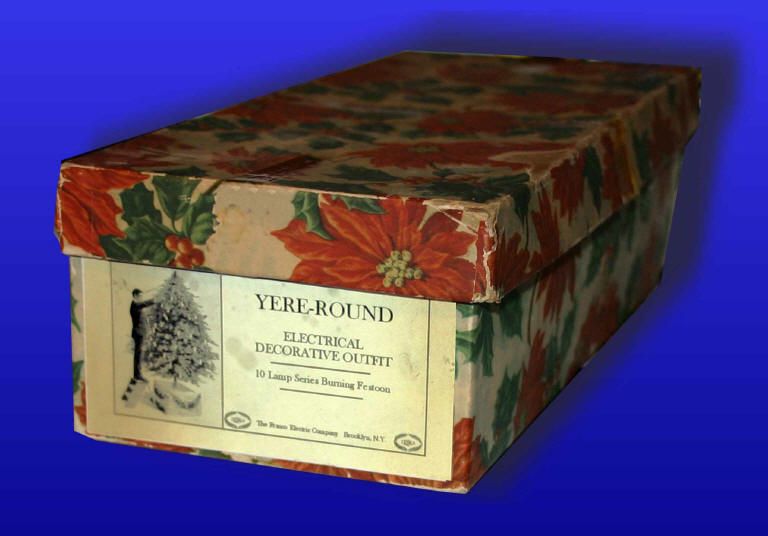
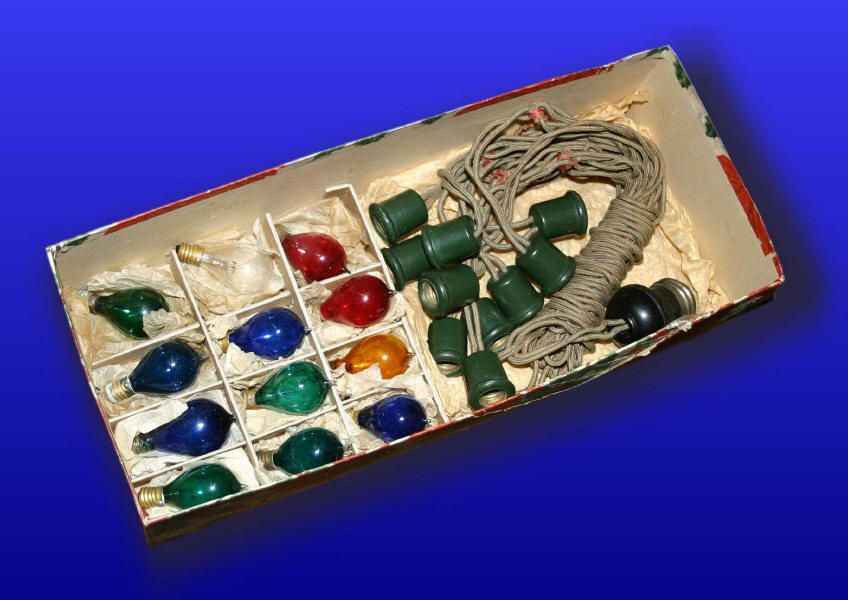
1920
One of the earliest attempts
at solving the problem within the wiring itself was offered by The
Franco Electric Company. A rare outfit, this festoon consists of ten
sockets, rather than the usual eight or nine. With ten series-wired
sockets, each 14 or 15 volt lamps would receive about 11 volts each
when used on a typical 110 volt household power circuit of the
times, dramatically increasing bulb life. The downside of this
configuration is that each lamp will burn with only about 2/3 of its
full brightness. |
|
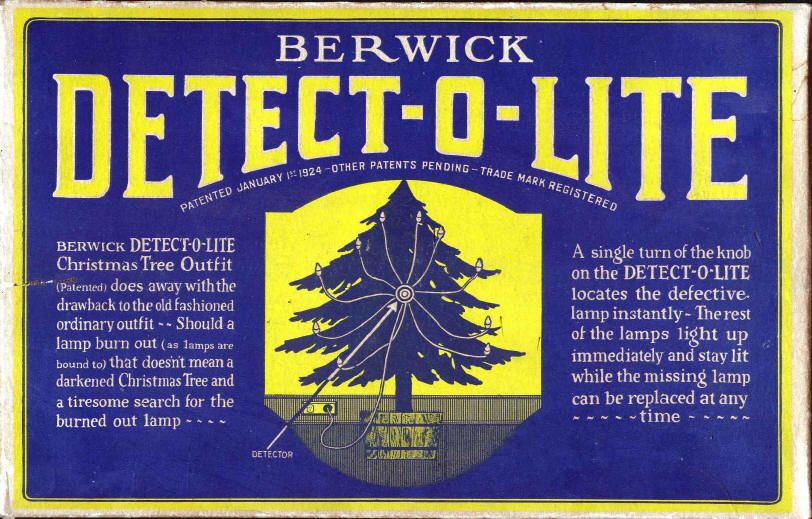
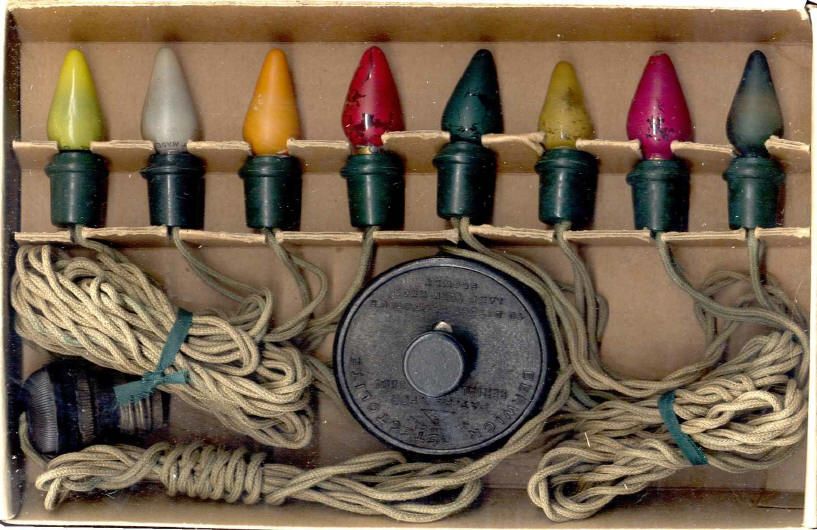
1924-1925
Another interesting attempt
to solve the problem within the wiring itself was offered by
Triangle/Berwick in 1924. Called the Detect-O-Lite outfit, this
string had an ingenious control box on the string, with a small knob
in the center. When the string went out, the owner simply started
turning the knob until the string came back on. Theoretically, once
all of the lights were lit, the bad lamp could be easily located.
The system worked by simply bypassing a different socket with each
click of the knob, essentially shorting it out. When the socket with
the bad bulb was shorted and therefore bypassed, the string would
come on.
While the system worked
quite effectively, the control box was large and heavy, making
decorating difficult. A large tree with several strings of lights
would have many control boxes, making the task of hiding them almost
impossible. Add this to the fact that even with all of the strings
lit, it was not so easy a task to spot a darkened lamp. This outfit
was expensive, selling for three times what an "ordinary" light set
sold for, and was soon discontinued. |
|
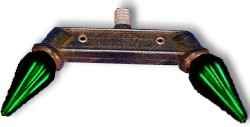

1926
Several devices appeared on
the market in the 20s, two of which are shown here. The idea was
quite simple-by adding an extra lamp to a string of 8 lamps, the
resulting voltage to each is lowered. The disadvantage is that the
lower voltage dims the entire string. This method was actually quite
popular, and many strings today can be found which have even had an extra
socket or two spliced into the string. |
|
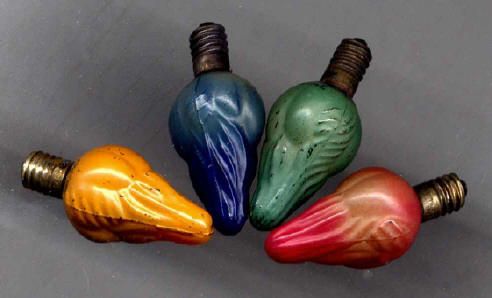
1929
An attempt to
solve the burnt out lamp problem in series wired sets came to us
from Japan. Patented in 1929, the XL lamps contained a shunt device
that allowed the rest of the light string to remain lighted should
one or more lamps burn out. While the invention worked to keep the
string lit, it was not successful from a practical point of view.
When a bulb failed, the remaining seven on the string would receive
considerably higher voltage, shortening their life. If the failed
lamp was not replaced quickly, the stress on the remaining lamps
soon took its toll. Genuine XL lamps are so marked on the glass
envelope at the base of the bulb. There were also regular lamps made
with the distinctive heavy embossed flame design, but they do not
say XL on them. The Reliance company distributed the all of the XL
branded light sets, although the Reliance name is seldom found on the
boxes. Incidentally, the "XL" nomenclature referred to the lamps
having "Xtra Life", as some of them were rated at 16 volts instead
of the more common 14 or 15. Operation on normal household current
of 110 volts resulted in the lamps lasting just a bit longer. XL
lamps were used by other manufacturers as well, and sold under
differing brand names.
 |
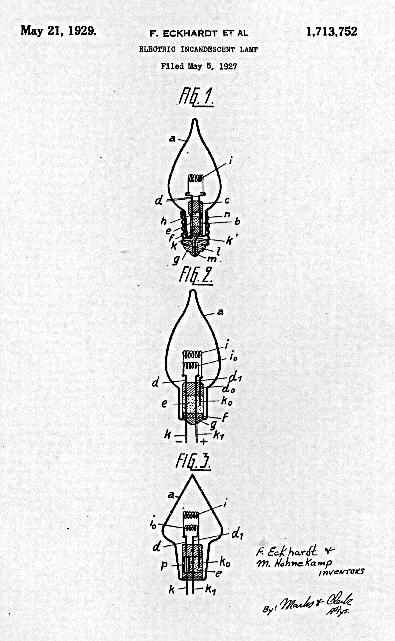 |
 |
|
Circa 1935 XL Lighting
Outfit |
Original patent for shunt
type lamps |
A look Inside the Box |
|
|
 |
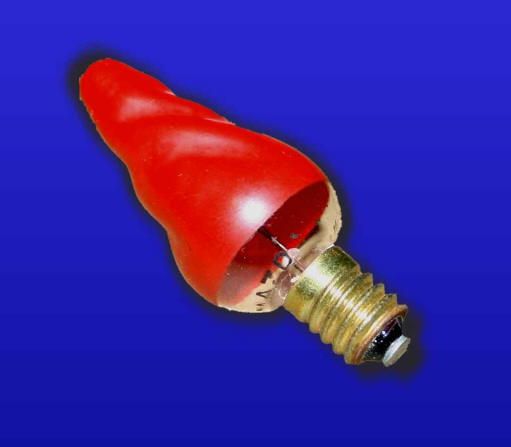 |
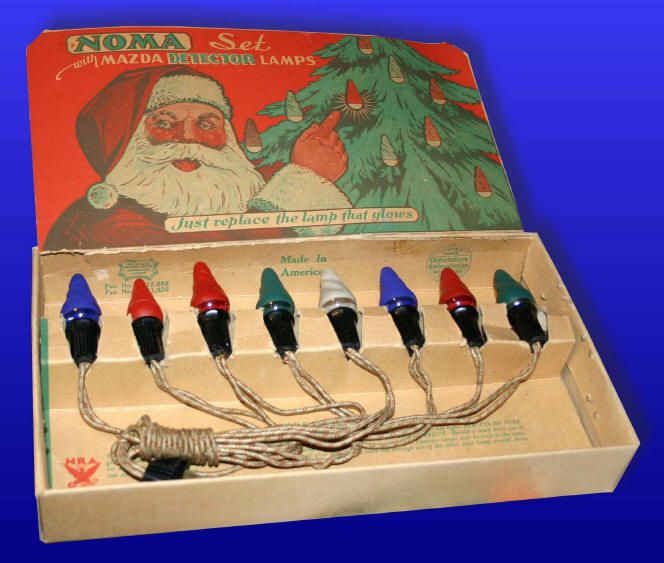 |
|
Box of Westinghouse Mazda
Detector Lamps |
Close-up of lamp |
A ca 1933 NOMA set
advertising the use of the new Detector lamps. |
1933
In the early 1930s,
General Electric and Westinghouse sold Detector Lamps, quite a
unique innovation in Christmas lighting. A typical series-type light
bulb was filled with neon gas, so that when the lamp failed the
string would still go dark, but the failed lamp would glow a bright
orange. The glass envelope was slightly altered to make the new
lamps easily discernable from the "common" type, and a twisted
design was molded into the glass. To make it easier to locate the
bad lamp, the bottom fifth of the glass envelope was left unpainted,
so the glowing neon could easily be seen. This idea worked quite
well, and for a time the lamps were good sellers. However, customers
were unhappy about the glaring white light showing around the
unpainted base when the lamp was operating normally. Once again, the
Christmas lighting industry failed to please a demanding public, and
the lamps were no longer made by the beginning of World War II. The
set pictured above has the NRA stamp in it, indicating a manufacture
date between the years 1933 and 1935.
|
|
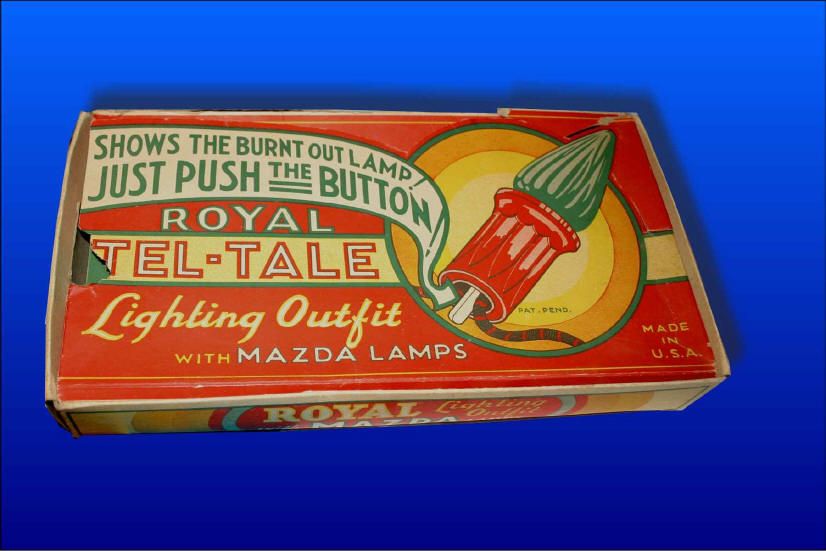
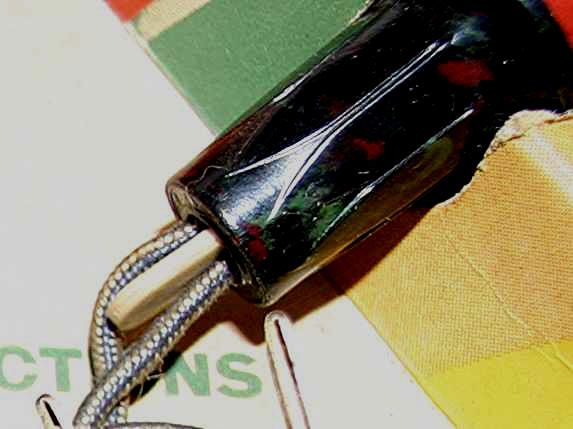

1934
In 1934, Royal Electric came
out with their new Tel-Tale outfit. Designed to help the consumer
detect a burnt out lamp in a darkened string, this set had
individual buttons at the bottom of each lamp socket. When pushed
in, the button would short out the socket, thus effectively
bypassing it. If the string lit, the bad lamp had been located. If
not, one would move on to the next socket and so on. Technically,
this set uses the same principle as does the earlier Detect-O-Light
set discussed above, but eliminates the heavy control box. As you
can guess, the task of pushing each button on several sets of lights
on a dark tree was a tedious one, and this outfit was discontinued
after just two seasons. This is a very hard set for the collector to
find today. |
|
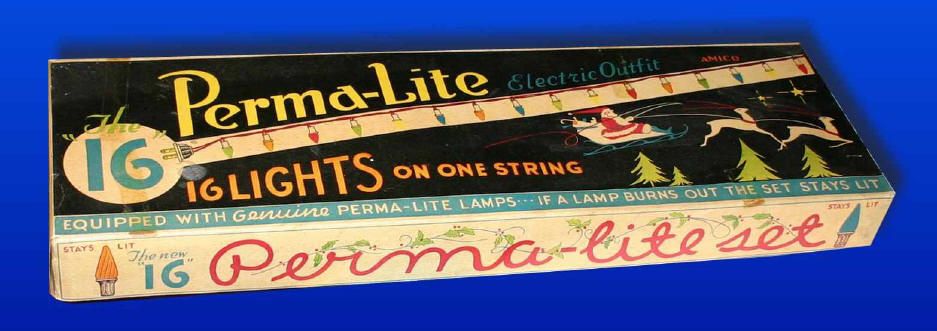
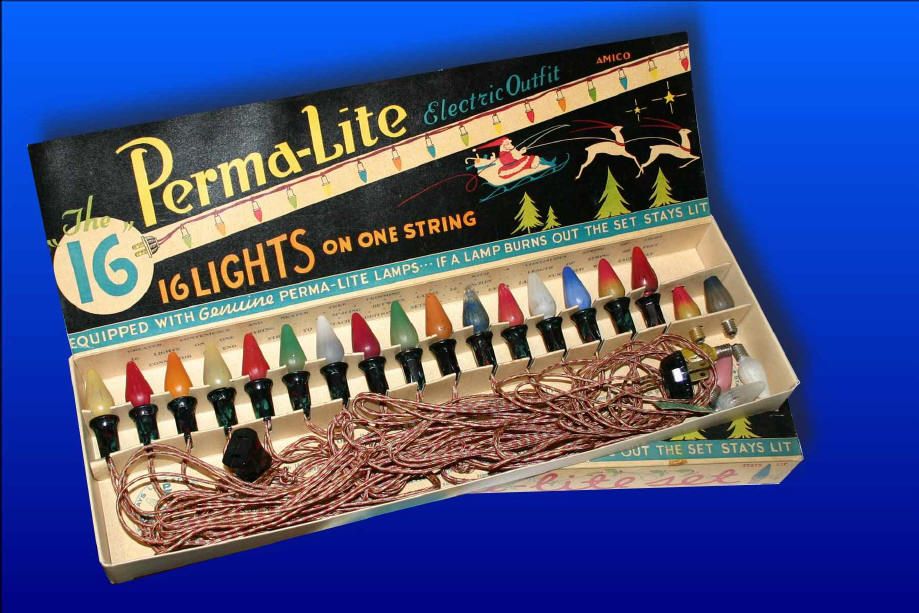
1936
Again using lamps imported from
Japan, this set of Perma-Lites was offered by AMICO. The lamps
employed the same patented shunt device as did the XL lamps, but
their shape was much closer to a typical C-6 type bulb. These lamps
were apparently not as sturdy as were those of the XL variety, as the filament
structure in these is a bit different and the glass is thinner. As with all of the shunt type C-6 miniature base lamps
discussed on this page, it was no longer manufactured after World
War II. This set is unusual in that it incorporates two independent
strings of eight lights each, connected to a single plug. AMICO was
purchased by the NOMA company during the war years, and NOMA used
the name in their products that included imported lamps. |
End of Section
Welcome Page
TABLE OF CONTENTS
|

































